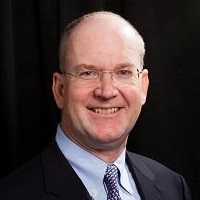 By Don Rucker M.D./ National Coordinator for Health Information Technology
By Don Rucker M.D./ National Coordinator for Health Information Technology
Twitter: @ONC_HealthIT
EMRs, EHRs, and Medical Computing
These are exciting times for the software industry, with extraordinary new products and services on devices from phones and tablets to their backend enterprise servers. We need this dynamism in software development to provide increased interoperability and usability to patients and clinicians.
Clinicians and patients are aware that, while electronic health records (EHRs) and information systems have made significant progress and achieved widespread use, there are still issues related to integrating data into information systems moving the information in an effective manner, and minimizing any extra work with using these systems.
Interoperability and usability are truly difficult challenges, and ONC is shifting its focus to working with industry and the public sector to address them. More on this to come.
Informatics, the science and processing of data for storage and retrieval, is still an odd enough career choice. As such, I have been getting a lot of questions about how I got interested in this field and found my way to ONC.
Starting Out
As a medical student at the University of Pennsylvania, I was surprised by how inefficient healthcare seemed to be. I had the good fortune of being taught by John Eisenberg, then a first year faculty member who was talking about the science of rational clinical decision making, and I got excited about “decision trees”. As a resident at University of California San Diego, I realized that what was really missing in making healthcare more efficient was data. Personal computers were becoming more commonplace at that time and I started thinking about building software to capture data to improve healthcare. At that time, I knew nothing about computers, so naturally, I opted for more schooling! I was able to pursue my interests in clinical efficiency and data at Stanford University where I got an MBA and became one of the first students in Ted Shortliffe’s remarkable medical computer science and artificial intelligence program.
While my business school classmates went on to investment banking and consulting firms, I joined a five-person startup founded by Paul Gertman that was building the first Windows-based electronic medical record in the world. I was involved with this business, Datamedic, in various capacities throughout the 1990s and also became the first full-time emergency room attending physician at Beth Israel in Boston. My next step was to join Shared Medical Systems, soon to be purchased by Siemens, as chief medical officer.
That led to a many-year journey designing and deploying Computerized Provider Order Entry (CPOE) systems at a number of US hospitals. One can argue that CPOE was the broadly based clinical software to make hospitals more efficient. At Siemens I eventually became heavily involved in a broad range of clinical policy outreach activities and got to spend a significant amount of time working with many of the federal agencies managing U.S. healthcare policy.
Throughout this journey, I’ve always thought of myself as a clinician and have continuously practiced a combination of emergency medicine with some internal medicine. This includes working as an emergency room physician at the University of Pennsylvania and Ohio State University over the last 17 years.
I’m optimistic that my path straddling high performance clinical medicine, as well as cutting edge software development, will power additional insights to help ONC best serve the health needs of our country.
Looking Toward the Future
I have taken the great liberty of giving you my background to provide readers with a sense of the experiences I bring to the position of National Coordinator.
Ultimately I envision care that is driven by multiple electronic data streams – not just one’s own personal medical history, but also insights from population and public health efforts. That’s not yet a reality, but it is within reach.
More practically, we will focus on improving interoperability so patients can access and move their health records and providers can easily send, receive, and analyze patient data. We will also prioritize improving EHR technologies and reducing documentation burden, time inefficiencies, and hassle for clinicians, allowing them to focus on their patients rather than their computers. We need to ensure that our policies reflect the goals of economic transparency and operational efficiency to lower both the cost of care and administrative costs. We will be working closely with our colleagues across the public and private sector and with Members of Congress to share that message. I want to empower people to shop for care and empower the healthcare market to be efficient without adding to our regulatory and policy “stack.”
Indeed, these themes of transparency and operational efficiency are reflected in the 21st Century Cures Act. ONC has much work ahead implementing the provisions in the Cures Act, many of which are focused on interoperability. We’ll also be working closely with our colleagues at the Centers for Medicare & Medicaid Services on the implementation of the Quality Payment Program established by provisions of the Medicare Access and CHIP Reauthorization Act of 2015 to ensure that we aren’t burdening clinicians with more work that takes them away from patient care.
We have a great team in place at ONC, and I’ve been struck over the past several weeks about their passion and commitment to supporting the health of our nation’s citizens. I’m looking forward to digging into this work with them, and engaging with the health IT community to achieve a more transparent and efficient healthcare marketplace.
This post was originally published on the Health IT Buzz and is syndicated here with permission.
